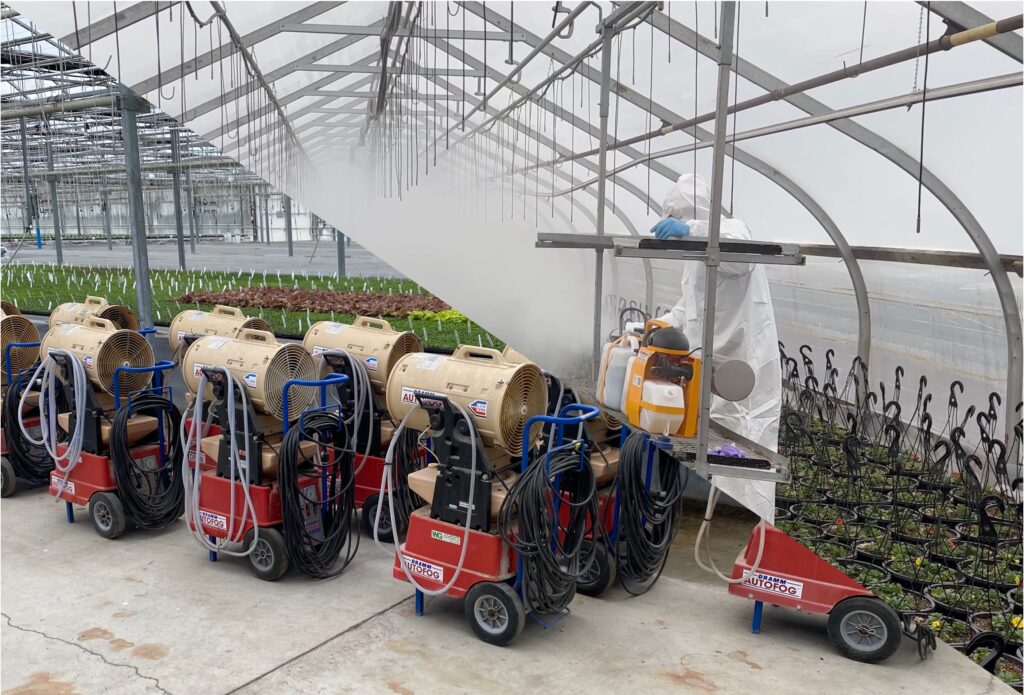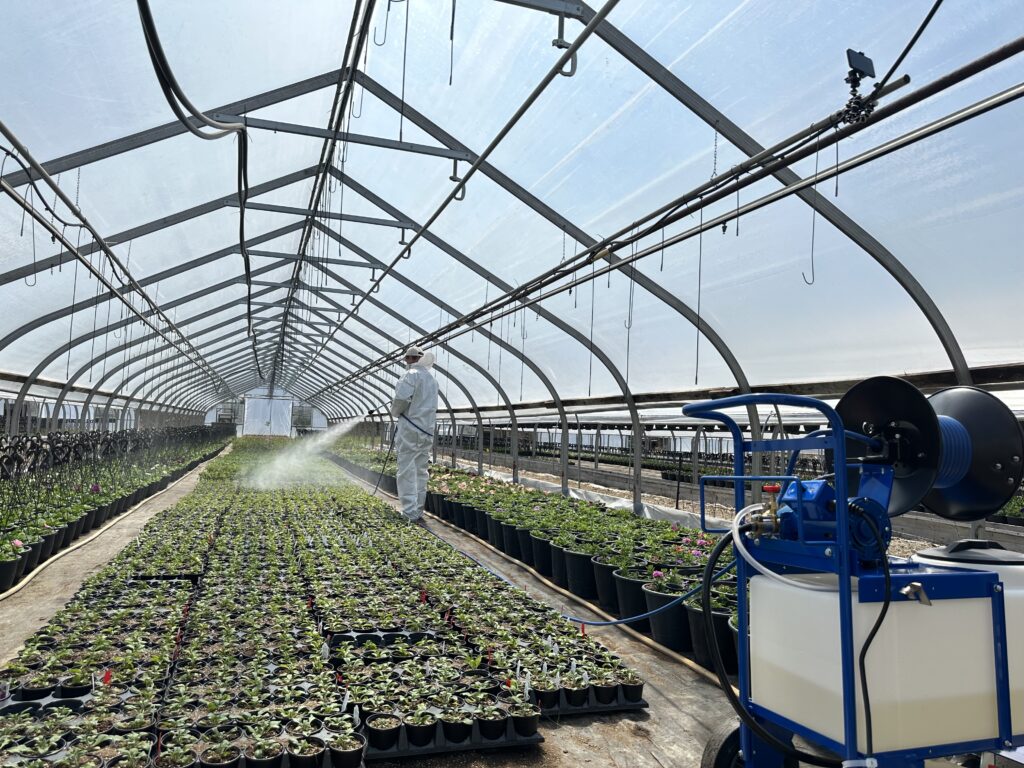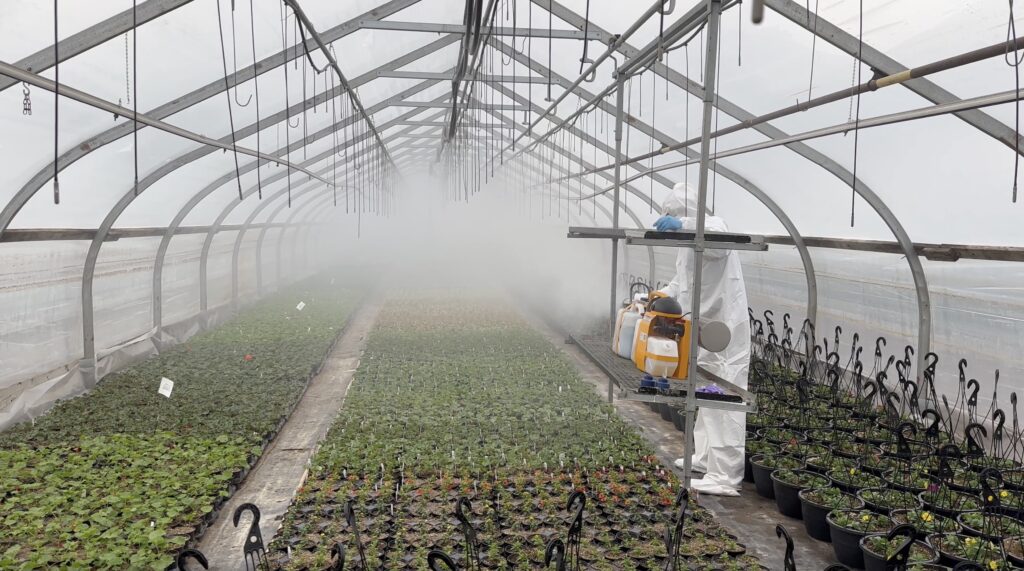Fogging Calcium for Poinsettia Bract Edge Burn

Poinsettia Bract Edge Burn is a common occurrence in this Christmas crop. Brown necrotic lesions occur on the bract margin. The primary cause for this is low levels of calcium in the bract. Some poinsettia varieties have difficulty translocating calcium to the bract margin as the bract expands. Once necrosis begins, botrytis often follows, often leading more plant damage.
PulsFOG vs. Autofog. Why Both Might Be Your Best Choice When Choosing a Fogger.

Dramm offers more than 50 different pieces of equipment to apply pest control products in the greenhouse. From hydraulic sprayers to automatic foggers, our belief is that spray equipment is like tools in a toolbox. There are many tools needed for home repair: hammers, wrenches, pliers, screwdrivers. My toolbox has at least a dozen different screwdrivers because no one tool does it all.
Applying Biopesticides – Considerations for Best Application

Biopesticides are no longer tools only for organic growers. Most bios are great additions to a traditional IPM program. Because they are effective and employ different modes of action, biopesticides can be effective tools for any grower. However, most have special considerations for application. Understanding these issues and how they apply to different application methods can improve the efficacy of these products and prevent some messes along the way.
The Basics of Fogging for Plant Protection

Fogging for plant protection involves much more than creating a fog. Recent equipment releases into the horticultural industry show videos of fog permeating a crop and rapidly obscuring the space with a thick, smoke-like fog that cannot be seen through. Systems like this are most commonly used in the filmmaking industry where battlefields are often made to look more realistic with plumes of “smoke” and the fog of war. Unfortunately, these fogging systems rely on two points that make them less useful for plant protection.
Greenhouse Sanitation – Now There is Another Reason

Traditionally, ornamental greenhouse sanitation was a term used to describe procedures to prevent plant pathogens from multiplying. This would typically include reducing algae, removing weeds from gravel or along sidewalls. Sweeping between crops and washing down growing space was regarded as taking extra measures. The goal was to remove plant pathogens and prevent their spread from plant to plant to prevent economic loss.
